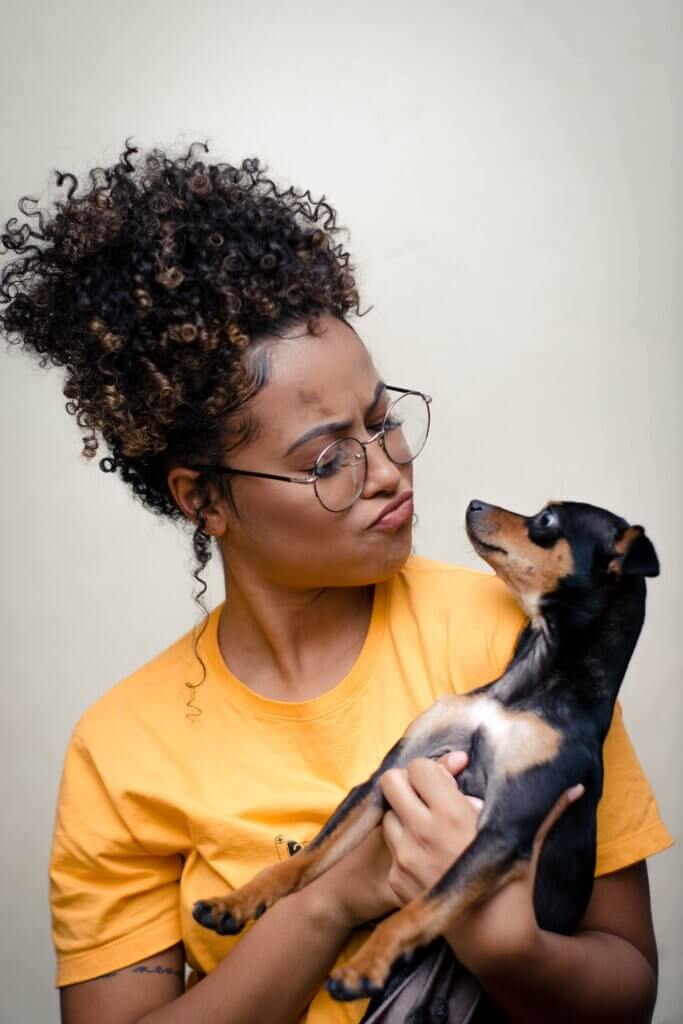Why You Need to Know Dog CPR and Pet Emergency First Aid

If your four-legged family member is in dire need of first aid, the burden will fall on you. There simply aren’t ambulances for pets. Therefore, it is critical for pet owners to learn dog CPR and other first aid techniques.
As Dr. Deborah Mandell explains for Vet Street, “I’ve definitely seen patients whose owners have performed CPR at home or in the car and have saved their pets […] I am a huge advocate, obviously, of having all pet owners know it.”
Knowing how to ease your pet’s pain, speed up healing, and perform dog CPR can save your four-legged family member’s life. Plus, you can reduce the costs of veterinarian visits.
When Facing a Dog Emergency, Start by Checking Your Dog’s Pulse
Unfortunately, most dog owners don’t even know where to begin when it comes to pet CPR. For instance, you may not even know the signs of cardiac arrest in a dog. Here are the 3 trouble signs:
- Loss of consciousness
- Loss of normal breathing
- Lack of pulse
Speaking of lack of pulse, many pet owners don’t know how to check their dog’s pulse. You should be able to find a pulse in your dog’s femoral artery (the inner thigh). According to Canine Journal, “Run your hand along the inside of the hind leg until you are almost to the point the leg joins with the body. There you should feel a slight dip where the femoral artery is closest to the skin. Use your fingers (not your thumb) to press down gently and feel for a pulse.”
If you can’t feel a pulse in the femoral artery, try checking the metacarpal pad (the center pad of your dog’s paw) or by placing your hand on your dog’s chest to feel for a heartbeat.
If you do not see your pup’s chest moving and cannot find a pulse, you need to begin dog CPR (Cardio Pulmonary Resuscitation).
How to Perform Dog CPR
Here are the steps to performing CPR on pets:
- Lay your dog on a flat surface with their right side down.
- Straighten the dog’s head and neck so the airway is clear.
- Position yourself at your dog’s back.
- Place both hands (one on top of the other) on the rib cage near the heart. (Note – “For smaller dogs weighing 30lbs (13.6kg) or less, cup your hands around the dog’s rib cage, placing your fingers on one side of the chest and your thumb on the other.”
- Begin compressions at a rate of about 100-120 compressions per minute.
- Perform 30 compressions.
- Give rescue breaths by closing the mouth and then covering your pet’s mouth and exhaling until you see your pet’s chest rise. Give a second rescue breath.
- Continue the cycle of 30 chest compressions and 2 rescue breaths.
- Check for breathing and a pulse every two minutes.
- Continue dog CPR until you reach the emergency veterinarian.
Resources to Help You Learn Dog CPR
We know that reading through the steps isn’t enough. Thankfully, there are many great resources available for dog parents to help them learn CPR and basic first aid. Here are some of we found helpful:
- Emergency Vet Instructs: Learn to Perform CPR on a Dog in 5 minutes (YouTube Video)
- The Red Cross Pet First Aid App – The app includes a video tutorial on how to perform dog CPR, as well as veterinarian advice for different types of dog emergencies.
- The Red Cross Cat & Dog First Aid Online Training – According to the website, “In this 35-minute online course, you will learn the basics in caring for cats and dogs through a variety of topics – from understanding and checking your pet’s vital signs, to preventative care for cats and dogs, to caring for the most critical emergency situations – including breathing and cardiac emergencies, wounds, bleeding, and seizures.”
Check Out the Dallas PetSaver Pet CPR, First Aid & Care for Your Pets Workshop
Dallas area residents have an opportunity this month to learn pet CPR and first aid at a comprehensive, hands-on workshop. Dallas PetSaver’s Pet CPR, First Aid & Care for Your Pets Workshop will take place on September 19, 2020, from 8 AM – 6 PM. This exclusive workshop will cover the following first aid topics:
- Priorities and Concerns of Emergency Procedures
- Restraining and Muzzling
- Primary Pet Assessments
- CPR
- Rescue Breathing
- Choking Management
- Bleeding, Shock, and Fracture Protocols
- Poisonings
- Insect and Snake Bites
- Heat and Cold Injuries
- Seizures
- Vitals
- Pet First Aid Kits
- Snout to Tail Assessments
- Caring for your Senior Pet-izen™
- Dental Care for your Pets
If you register for the workshop, be sure to tell them we sent you!
A Dog Emergency We Understand
At Super Scoopers, we love dogs. We never want any harm to come to one of our furry friends, which is why we strive to provide our clients with resources they can use to prepare for dog emergencies, such as where and how to learn dog CPR.
We also help with a different kind of dog emergency – getting rid of the dog poop taking over your backyard. Whether you need a one-time emergency clean-up or weekly scooper service, we are prepared to answer the call of DOOdy!




